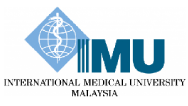Severe Respiratory Sequelae Of H1N1: Clinical Features, Management And Outcome – A Review
Authors: Ismail A Hamid, Marzida Mansor, Gracie Siok Yan Ong, N M Kumar.
ABSTRACT
Since the outbreak of the novel influenza H1N1 in April 2009 in Mexico, more then half a million cases have been recorded with more then 6000 deaths. In contrast to seasonal flu, this virus appears to have a predilection for the young, obese and pregnant. It’s most important and almost fatal complication is Acute Respiratory Distress Syndrome (ARDS). Intensive care units (ICU) around the world have scrambled to upgrade various treatment modalities including high frequency oscillation ventilation, inotropes, antivirals and antibiotics in an effort to reduce the mortality arising out of this complication. More importantly, this complication appears reversible if adequate and early therapy is instituted. In particular, rescue therapies that allow the lung to rest appear to have brought success in some clinical settings. This article describes the experiences of seven centers that have used various modalities as rescue therapy in patients having Acute Respiratory Distress Syndrome (ARDS). The experiences in 13 patients at the University of Michigan, 58 in Mexico, 168 in Canada, 180 patients at Leicester UK, 194 in Australia and New Zealand and case reports from Hong Kong and Singapore are described.
Keywords: H1N1, ARDS, ventilation, ECMO.
Citation: IeJSME 2010: 4(2): 10-17

